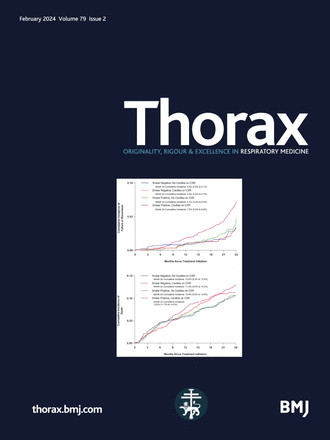终生肺功能轨迹:洞察风险因素、后果和影响
IF 9
1区 医学
Q1 RESPIRATORY SYSTEM
引用次数: 0
摘要
终生保持最佳肺功能不仅对呼吸系统健康很重要,对整体健康和长寿也很重要。随着越来越多的证据表明肺功能在人一生中的多个窗口期都具有临床意义,关于肺功能轨迹1 的研究也越来越多,包括本期刊登的 Zhang 等人的研究2。肺功能轨迹 "一词指的是肺功能随时间变化的轨迹。肺从怀孕头三个月开始发育,在整个童年和青春期生长,在成年早期成熟,然后逐渐衰老。因此,肺功能会随着时间的推移而增强,然后在成年早期达到顶峰,然后停滞一段时间,然后随着年龄的增长而下降。肺功能受不良宿主因素和环境暴露的影响。事实上,基因(G)和环境(E)在整个生命周期(T)中存在多重动态相互作用,即 GETomics3 ,在一个或多个生命窗口期引起异常,导致发育受损、生长减慢、高原期缩短和衰退加速。由于 GETomics 的不同,肺功能随时间的变化会有很大差异,从而形成一系列肺功能轨迹。1 例如,包括曼彻斯特哮喘和过敏研究(MAAS,5-16 岁)、雅芳家长和儿童纵向研究(ALSPAC,8-24 岁)、澳大利亚珀斯婴儿哮喘随访(PIAF,1-18 岁)和雷恩研究(Raine Study,6-22 岁)在内的从儿童期到成年早期(成长期)的研究报告了与平均轨迹平行的多种肺功能轨迹。5 塔斯马尼亚纵向健康研究(TAHS)首次对肺功能轨迹(7-53 岁)进行了调查,该研究同时捕捉到了肺功能增长和下降的轨迹。本文章由计算机程序翻译,如有差异,请以英文原文为准。
Lifetime lung function trajectories: insights into risk factors, consequences and implications
Maintaining optimal lung function throughout life is important not only for respiratory health but also for overall health and longevity. With emerging evidence on the clinical significance of lung function at multiple windows throughout life, there has been an increasing number of studies on lung function trajectories1 including by Zhang et al in this issue.2 The term ‘lung function trajectory’ refers to how lung function tracks over time. The lungs start to develop from the first trimester of pregnancy, grow throughout childhood and adolescence, mature in early adulthood and then gradually age. As a result, lung function increases over time before reaching a peak in early adulthood, then plateaus for a while before declining with age. Lung function is influenced by adverse host factors and environmental exposures. Indeed, there are multiple and dynamic interactions between gene (G) and environment (E) throughout the lifespan (T), termed as GETomics,3 causing abnormalities at one or more life windows leading to impaired development, reduced growth, shortened plateau and accelerated decline. Due to varying GETomics, there can be substantial variation in change in lung function over time making up a range of lung function trajectories. Most studies on lung function trajectories were only able to capture either lung growth or decline phases.1 For example, studies from childhood to early adulthood (growth phase) including the Manchester Asthma and Allergy Study(MAAS, 5–16 years), the Avon Longitudinal Study of Parents and Children (ALSPAC, 8–24 years), the Australian Perth Infant Asthma Follow-up (PIAF, 1–18 years) and the Raine Study (6–22 years) reported multiple lung function trajectories that are parallel to the average trajectory.4 5 The Tasmanian Longitudinal Health Study (TAHS) was the first to investigate lung function trajectories that capture both lung growth and decline (7–53 years).6 7 It not only showed two …
求助全文
通过发布文献求助,成功后即可免费获取论文全文。
去求助
来源期刊

Thorax
医学-呼吸系统
CiteScore
16.10
自引率
2.00%
发文量
197
审稿时长
1 months
期刊介绍:
Thorax stands as one of the premier respiratory medicine journals globally, featuring clinical and experimental research articles spanning respiratory medicine, pediatrics, immunology, pharmacology, pathology, and surgery. The journal's mission is to publish noteworthy advancements in scientific understanding that are poised to influence clinical practice significantly. This encompasses articles delving into basic and translational mechanisms applicable to clinical material, covering areas such as cell and molecular biology, genetics, epidemiology, and immunology.
 求助内容:
求助内容: 应助结果提醒方式:
应助结果提醒方式:


